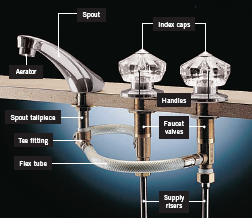 |
| HVAC DESIGN Rules |
Here are some general rules for HVAC design:
1. Proper Sizing:
The HVAC system should be sized correctly according to the area being managed. An undersized system will not be able to cool or heat the area properly, while an oversized system leads to higher energy consumption, inefficient performance, and higher costs.
2. Ductwork and Ventilation:
Adequate ductwork and ventilation must be provided to ensure proper distribution of air throughout the area. The ductwork should be designed to avoid pressure loss, reduce noise levels, and maintain a comfortable environment.
3. Air Quality:
The HVAC system should maintain good indoor air quality by providing proper filtration, humidity control, and ventilation. This helps to reduce pollution, allergens, and the growth of harmful microorganisms.
4. Energy Efficiency:
The HVAC system must be designed keeping energy efficiency in mind. The system should be able to operate at peak efficiency levels while minimizing energy consumption.
5. Maintenance:
The HVAC system must be designed with ease of maintenance in mind, making it simple and cost-effective to keep the system running efficiently.
6. Zoning:
Zoning refers to dividing the area into different zones where temperature, humidity, and airflow can be controlled independently. It ensures comfort, energy efficiency, and proper management of the area.
7. Consider sustainability:
The design should be environmentally sustainable, using eco-friendly refrigerants, minimizing energy consumption, and reducing the carbon footprint of HVAC systems.
It is always advisable to work with a professional HVAC design service provider to ensure that all necessary rules and standards are followed for efficient and effective performance.




0 Comments